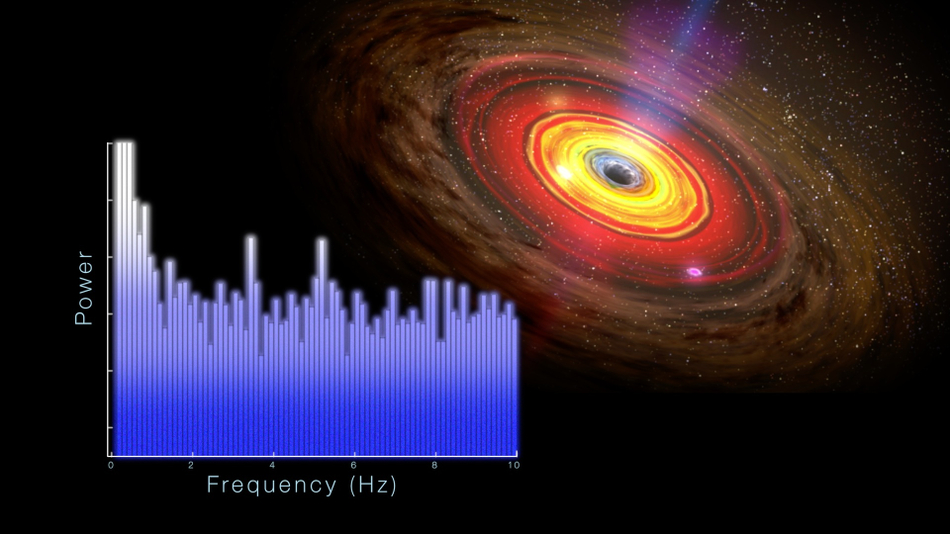
 Credit: NASA Goddard Space Flight Center
Credit: NASA Goddard Space Flight Center
Signal from Beyond
The Rossi X-ray
Timing Explorer (RXTE) was a small NASA satellite that, for 16 years,
observed variations of X-ray emission from strange objects in space, from
neutron stars to black holes, even normal stars and extremely massive colliding
wind binary systems. Although decomissioned in 2012, RXTE, over its working
lifetime, amassed a unique archive of X-ray data that's still providing
important new insights into the way the Universe works. A case in point is a new
study of an X-ray source in a galaxy known as M82, a source known as M82 X-1.
Using a careful study of the X-ray variations from M82 X-1 seen by RXTE,
astronomers were able to establish that M82 X-1 is probably an example of a
so-called "middleweight" black hole. These "middleweight" black holes have
masses between the stellar mass
black holes (which have a mass of a few times the mass of the Sun) and the
so-called "supermassive"
black holes (those monsters lurking at the centers of galaxies, like our own
Milky Way, which have masses of millions or even billions of times the mass of
the Sun). These middleweight black holes may be a bridge between the stellar
mass and supermassive black holes; or they may be unrelated objects. Astronomers
used six years of data stored in the RXTE archive to show that M82 X-1 shows a
pattern
of X-ray variations characteristic of middleweight black holes. The image
above is an image from a video showing
how these X-ray variations can be used to "weigh" a black hole. What other
hidden gems are waiting to be uncovered in the RXTE data?
Published: September 1, 2014
<
HEA Dictionary ● Archive
● Search HEAPOW
● Other Languages
● HEAPOW on Facebook
● Download all Images
● Education ● HEAD
>

Each week the HEASARC
brings you new, exciting and beautiful images from X-ray and Gamma ray
astronomy. Check back each week and be sure to check out the HEAPOW archive!
Page Author: Dr. Michael F. Corcoran
Last modified Monday, 26-Feb-2024 17:23:40 EST


